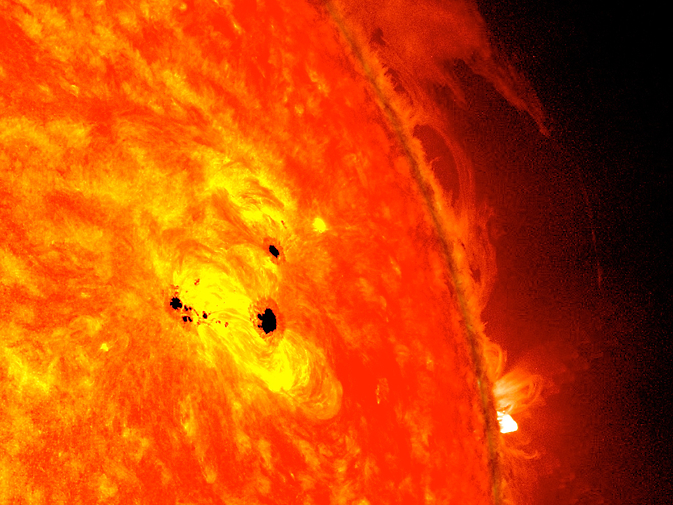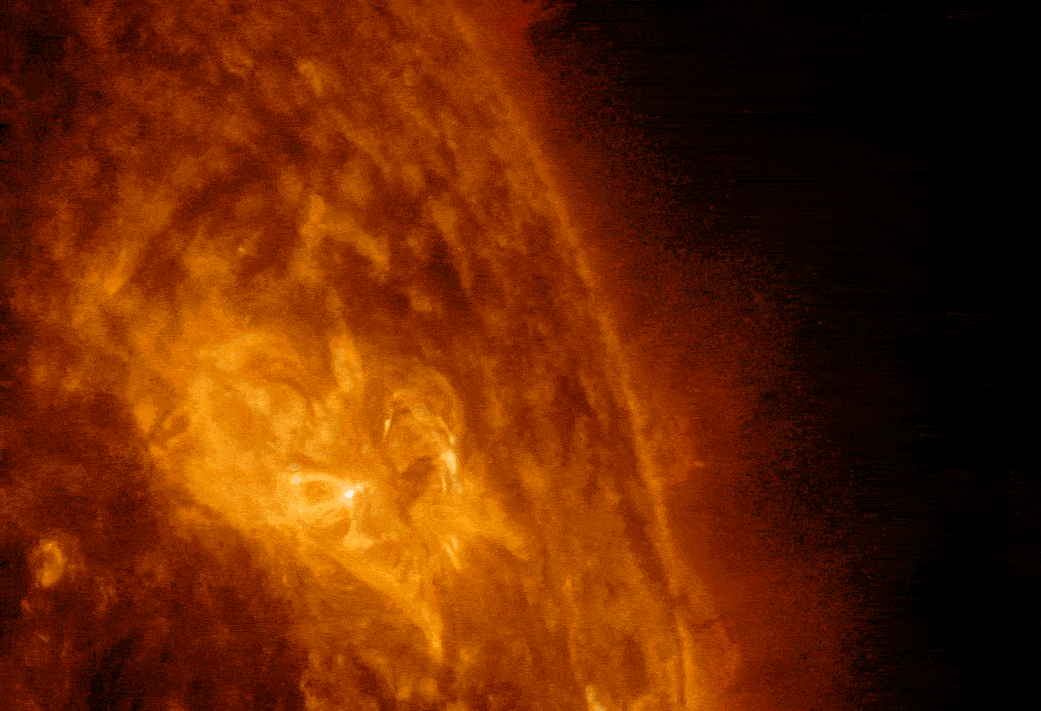The universe is unimaginably vast with trillions of galaxies each containing countless stars in them. Thousands of stars have planetary systems, and among them, our Solar System. In this mini-series, we shall explore the incredibly beautiful celestial bodies that orbit our Sun, starting with the Sun itself and Mercury in today’s post.
There are several different types of stars such as Protostars, T Tauri stars, Red Giants, White and Red Dwarves, Neutron and Main Sequence Stars (our Sun). Main sequence stars make up about 90% of the universe and the most common type among them is the Red Dwarf Star. Our Sun is a yellow dwarf star. An important feature in main sequence stars is that hydrogen atoms are fused to form helium atoms inside their cores. The Sun is a massive ball of gases that lies at the heart of the solar system, and its gravity holds every celestial body that orbits it.
Sometimes, the sun’s visible surface has dark sunspots which are actually areas of intense magnetic activity and can lead to solar explosions. Sunspots appear dark because they are cooler than the surface of the sun. However, they are still pretty hot – about 36,000 degrees Celsius!

The sun is a very busy ball of gas, and some areas on it generate powerful magnetic fields. The constant motion of the sun’s gases twists the magnetic fields. This is known as solar activity. The magnetic fields near sunspots can cause explosions of high amounts of energy called solar flares. Solar flares give out a lot of radiation and can interfere with radio signals on earth if they are very intense.

Our home star is a whopping 4.6 billion years old and astronomers estimate that it has a few billion years until it runs out of its fuel, hydrogen, becomes a red giant and eventually dies.
The smallest and closest planet to the Sun, slightly bigger than our moon and having a revolution period of 88 earth days, is our first planet, Mercury. Aptly named after the Roman God of Speed, Mercury has the fastest orbital period compared to all other planets as it closest to the Sun.
The Mariner 10 Spacecraft visited the planet in 1974 and 1975, revealing to us a world cratered like our very own moon. The largest crater on this planet, the Caloris Basin, was formed by a 100-km asteroid and the basin is surrounded by a ring of mountains known as the Caloris Montes which are approximately 2 km tall. This enormous crater is roughly 1,300 km across and is the largest aspect of this small planet.

Mercury also has the most craters in our Solar System as it has little atmosphere that can protect it from the impact of asteroids.
The Messenger and Mariner 10 are the only two spacecrafts to have explored Mercury. The Messenger discovered that the planet’s core makes up 85% of its volume, whereas Earth’s core makes up only 15% of the same. The spacecraft orbited Mercury for more than four years before it plunged into the planet’s surface in 2015. The Messenger gave us data on its surface composition, geological history, magnetic field and poles. It discovered evidence of ice in the poles, at places where sunlight never reaches Mercury because of the tilt in its axis.
Finally, as Mercury is so close to the Sun, it doesn’t have a moon. The Sun’s marginally greater force of gravity wouldn’t give the planet a chance to hold on to its own moon.
I now conclude our first small tour of two majestic celestial bodies in our Solar System and I hope you liked our little trek in the stars.
Thank you for reading and see you in the next post with Venus and our home, Earth!
If you liked this post, you may be interested in these –

Very informative! Eagerly looking forward to the next part!
LikeLiked by 1 person
Thank you!! It will mostly come out by next week.
LikeLike
How did anybody get a picture of the Sun?
LikeLiked by 1 person
There are space telescopes which orbit the Earth and there have been spacecrafts sent near the Sun.. probably not too close but just at the right distance, maybe somewhere near Mercury.
LikeLike
And you might have heard of the Hubble Space Telescope or the James Webb Telescope (which will be launched this year).
LikeLike